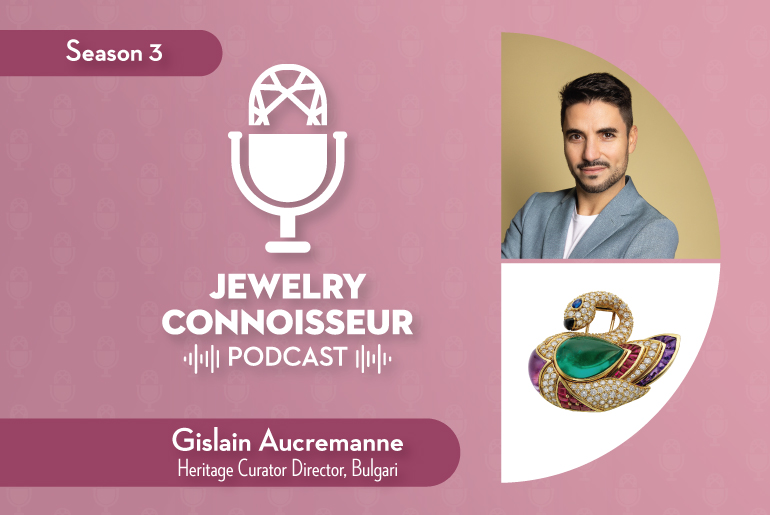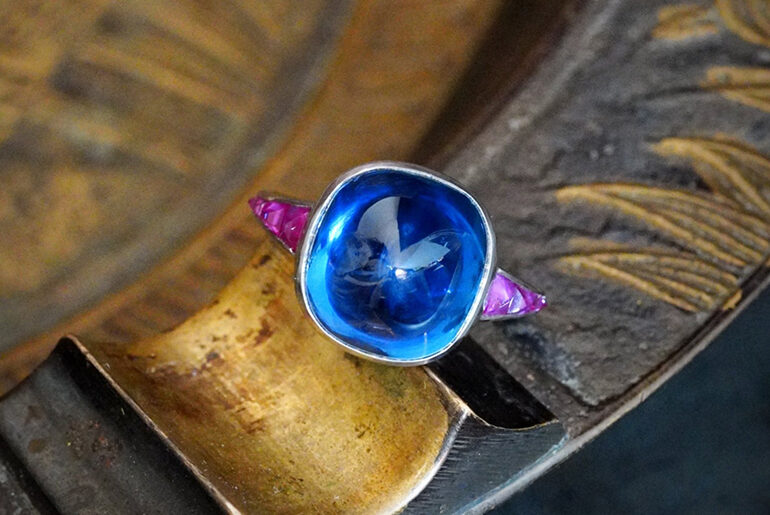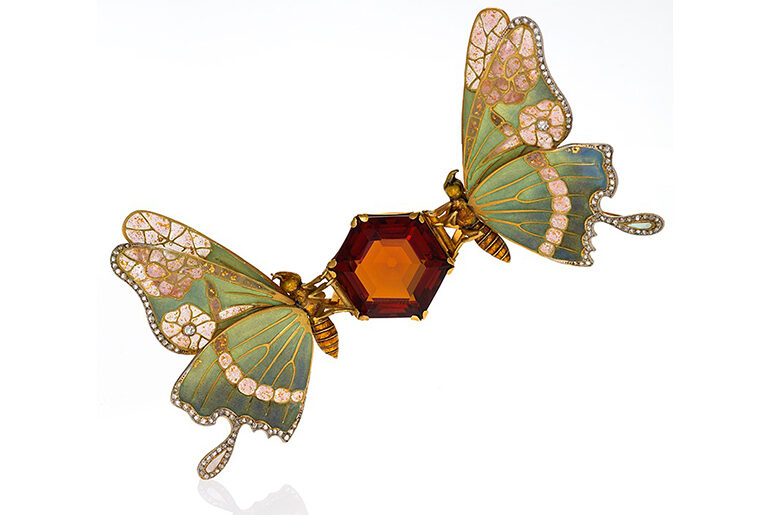Estate dealer Beverley Forward discusses the dos and don’ts of showcasing jewelry.
What’s the best way to display antique and vintage jewelry?
Display is of great importance to any jewelry business, whether antique or contemporary. You need to consider your cases. Are they column cases, where just a few or perhaps a single special piece can be displayed, or do you have vitrines or fixed wall cases that lend themselves to a much wider display or panoramic view? Then you need to decide how the jewelry can be displayed so the pieces enhance each other. Some earlier pieces have their own fitted boxes, which are wonderful for display and eliminate the need for stands.
Deciding how many pieces to display is important. If a customer does not get to see a piece, you will not sell it. But too many pieces can cause confusion in customers’ minds, making the selection of what is the right piece for them difficult. We try and display as many pieces as possible, but in such a way that the customer can see each as an individual piece. We do this by displaying our jewelry at different height levels, using risers and tall and short display stands.

Is it better to group pieces by theme or to mix different types?
There is no one right way. Some prefer to group by theme, for example, displaying all earrings on one shelf, bracelets on another, necklaces on a third. Others prefer to display according to the different periods, and still others’ preference is gemstones — all diamond, sapphire, ruby or emerald pieces, displayed by color. Or you can group certain types of antique jewelry, such as using a section of stickpins, cuff links and watch chains to create a Gentleman’s Jewelry Selection. Every so often, we like to vary display styles to keep things looking fresh.

Do different periods lend themselves to different kinds of displays?
Some Victorian pieces, especially from the earlier part of Queen Victoria’s reign, are very heavy and ornate and do not display well with later periods’ style of jewelry. But in the latter part of the Victorian era, the jewelry became lighter and had a much more contemporary look and feel. In fact, some contemporary jewelry has started to copy antique designs and so can be effectively displayed together with the older pieces. Also, using both platinum and gold jewelry in the same display case can be striking.

How often should you rotate what’s on display?
At Beverley R Jewelry, we’ve always found it helpful to freshen up our displays. The front window display we normally change once a month. The interior cases are usually changed at least once a quarter. In a new setting and being displayed with different pieces of jewelry, a piece previously overlooked can make a new favorable impression on customers.
One of the biggest mistakes jewelers can make is never changing their displays. It gives a feeling of staleness, as if nothing is ever sold. The retail public is attracted to success. We have used foliage and fauna to display antique “bug” brooches, [and] a bottle of wine to display a cameo ring of Bacchus, the god of wine. Be creative.

WHO IS BEVERLEY FORWARD?
Beverley Forward and her husband Stephen own Beverley R Jewelry in downtown Chicago, Illinois, where they offer fine antique and period
jewelry from the early 1800s through the 1950s. In the business for over 30 years, she is an expert in jewelry periods and settings, and he is a gemologist who passed the Gemmological Association of Great Britain (Gem-A) exams for diamonds and colored gems.
Main image: 18-karat gold and diamond torque collar necklace, circa 1960. Image: Beverley R Jewelry.





2 Comments
Nice blog post. I just shared it on Facebook. Keep up the
good work.
A-to-Z System for Copying how I make up to
$3000/day working from home- super newbie friendly.
https://tinyurl.com/uxbquys